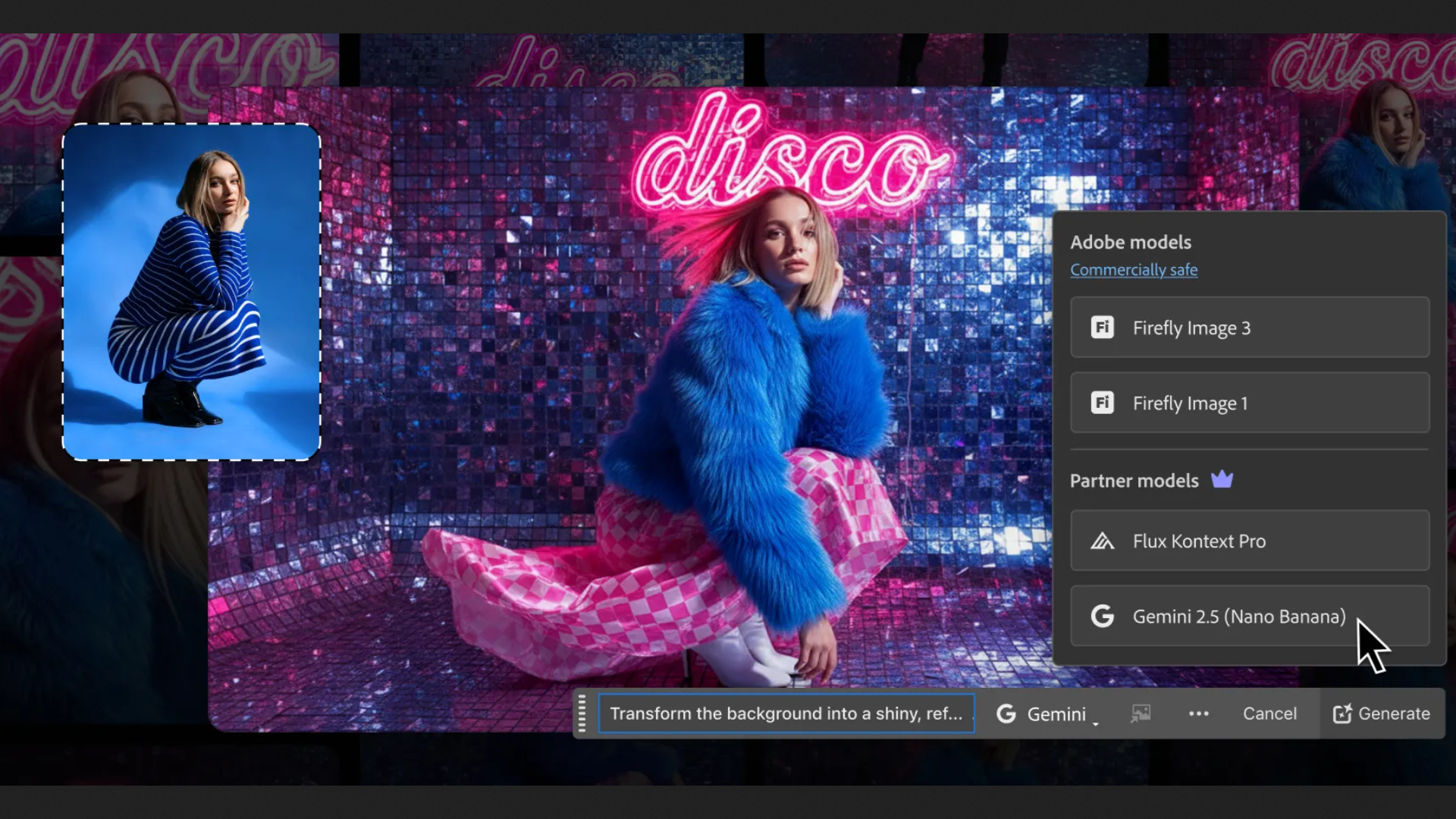Google’s Nano Banana AI Joins Adobe Photoshop as a New Generative Fill Model

Key Points
- Google’s Nano Banana AI (Gemini 2.5 Flash Image model) is now available in Photoshop’s Generative Fill beta.
- The integration places Nano Banana alongside Adobe Firefly and Black Forest Labs’ FLUX.1 Kontext.
- Nano Banana excels at producing bold, stylistic visuals, while FLUX.1 focuses on realistic lighting and Firefly ensures commercial‑grade consistency.
- Photoshop users can switch between models within the same prompt window, streamlining creative workflows.
- Adobe promotes Firefly for safe commercial use but encourages experimentation with third‑party models.
- The multi‑model approach aims to keep Photoshop a leading platform for both professional and hobbyist creators.
Adobe Photoshop’s beta version now lets users access Google’s Nano Banana AI—officially the Gemini 2.5 Flash Image model—directly within the Generative Fill tool. Alongside Adobe’s own Firefly and Black Forest Labs’ FLUX.1 Kontext, Nano Banana offers stylistic, eye‑catching visuals that creators can blend with realistic lighting and commercial‑grade outputs. The integration positions Photoshop as a hub for multiple AI image models, giving designers, marketers and hobbyists the flexibility to switch models on the fly and streamline creative workflows.
Integration of Nano Banana into Photoshop
Adobe has expanded the capabilities of its flagship Photoshop application by incorporating Google’s Nano Banana AI, known as the Gemini 2.5 Flash Image model, into the Generative Fill feature. This functionality is currently available to users who have opted into the Photoshop beta in the United States. The addition places Nano Banana alongside Adobe’s proprietary Firefly model and Black Forest Labs’ FLUX.1 Kontext, creating a multi‑model environment within a single editing interface.
What Nano Banana Brings
Nano Banana gained popularity for generating viral 3D figurine‑style images from ordinary photographs. Its strength lies in delivering bold, stylistic flourishes that attract attention, especially when used for imaginative or fantastical concepts. By embedding Nano Banana directly in Photoshop’s Generative Fill, creators can now produce these eye‑catching visuals without leaving the application.
Complementary Strengths of the Three Models
Adobe continues to promote its Firefly model as the go‑to choice for commercially safe results, emphasizing consistent quality and a training dataset that Adobe has rights to use. In contrast, FLUX.1 Kontext is described as ideal for realistic and coherent imagery, delivering natural lighting and accurate shadows. Nano Banana’s niche is its stylized, artistic output. The coexistence of these models allows users to combine strengths: for example, a fantasy illustration might start with Nano Banana’s magical effects, be refined with FLUX.1’s realistic lighting, and finalized with Firefly’s polish.
Benefits for Creators
The seamless model‑switching capability streamlines workflows for a wide range of users. Designers creating social media content can generate stylized backgrounds in seconds and adjust them without navigating away from Photoshop. Marketers can develop full product visual campaigns within a single platform, while hobbyists can experiment with playful imagery for personal projects. Adobe’s strategy to open Photoshop to third‑party AI providers aims to keep the software at the forefront of high‑end visual creation.
Future Outlook
Adobe has indicated that further improvements are forthcoming, including backend optimizations and finer controls over each model’s output. By positioning Photoshop as a central hub for multiple AI models, Adobe hopes to enhance creative flexibility and maintain its dominance in professional image editing tools.